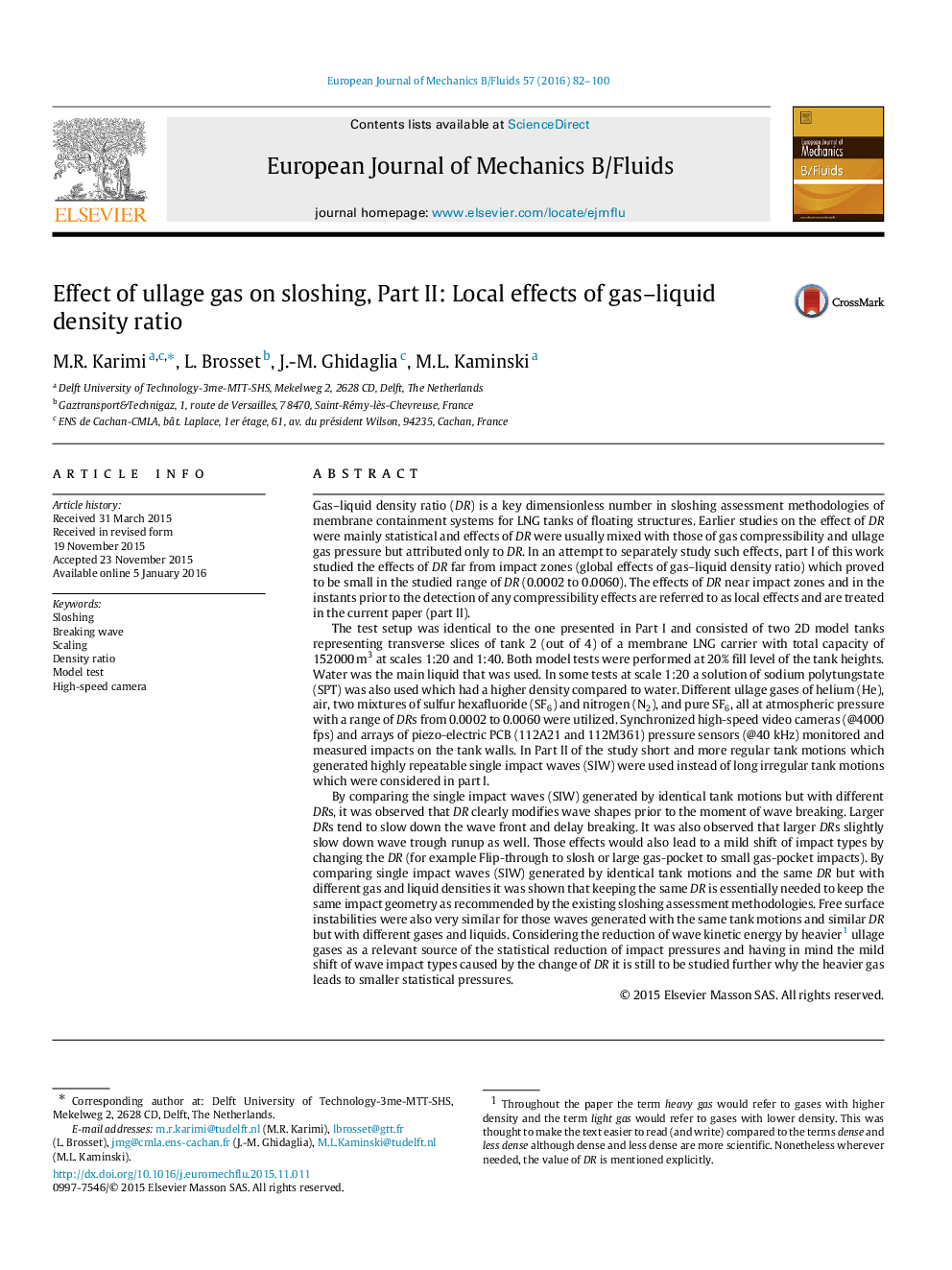| کد مقاله | کد نشریه | سال انتشار | مقاله انگلیسی | نسخه تمام متن |
|---|---|---|---|---|
| 650230 | 1457267 | 2016 | 19 صفحه PDF | دانلود رایگان |
Gas–liquid density ratio (DRDR) is a key dimensionless number in sloshing assessment methodologies of membrane containment systems for LNG tanks of floating structures. Earlier studies on the effect of DRDR were mainly statistical and effects of DRDR were usually mixed with those of gas compressibility and ullage gas pressure but attributed only to DRDR. In an attempt to separately study such effects, part I of this work studied the effects of DRDR far from impact zones (global effects of gas–liquid density ratio) which proved to be small in the studied range of DRDR (0.0002 to 0.0060). The effects of DRDR near impact zones and in the instants prior to the detection of any compressibility effects are referred to as local effects and are treated in the current paper (part II).The test setup was identical to the one presented in Part I and consisted of two 2D model tanks representing transverse slices of tank 2 (out of 4) of a membrane LNG carrier with total capacity of 152000 m3 at scales 1:20 and 1:40. Both model tests were performed at 20% fill level of the tank heights. Water was the main liquid that was used. In some tests at scale 1:20 a solution of sodium polytungstate (SPT) was also used which had a higher density compared to water. Different ullage gases of helium (He), air, two mixtures of sulfur hexafluoride (SF6) and nitrogen (N2), and pure SF6, all at atmospheric pressure with a range of DRDRs from 0.0002 to 0.0060 were utilized. Synchronized high-speed video cameras (@4000 fps) and arrays of piezo-electric PCB (112A21 and 112M361) pressure sensors (@40 kHz) monitored and measured impacts on the tank walls. In Part II of the study short and more regular tank motions which generated highly repeatable single impact waves (SIW) were used instead of long irregular tank motions which were considered in part I.By comparing the single impact waves (SIW) generated by identical tank motions but with different DRDRs, it was observed that DRDR clearly modifies wave shapes prior to the moment of wave breaking. Larger DRDRs tend to slow down the wave front and delay breaking. It was also observed that larger DRDRs slightly slow down wave trough runup as well. Those effects would also lead to a mild shift of impact types by changing the DRDR (for example Flip-through to slosh or large gas-pocket to small gas-pocket impacts). By comparing single impact waves (SIW) generated by identical tank motions and the same DRDR but with different gas and liquid densities it was shown that keeping the same DRDR is essentially needed to keep the same impact geometry as recommended by the existing sloshing assessment methodologies. Free surface instabilities were also very similar for those waves generated with the same tank motions and similar DR but with different gases and liquids. Considering the reduction of wave kinetic energy by heavier 1 ullage gases as a relevant source of the statistical reduction of impact pressures and having in mind the mild shift of wave impact types caused by the change of DRDR it is still to be studied further why the heavier gas leads to smaller statistical pressures.
Journal: European Journal of Mechanics - B/Fluids - Volume 57, May–June 2016, Pages 82–100
